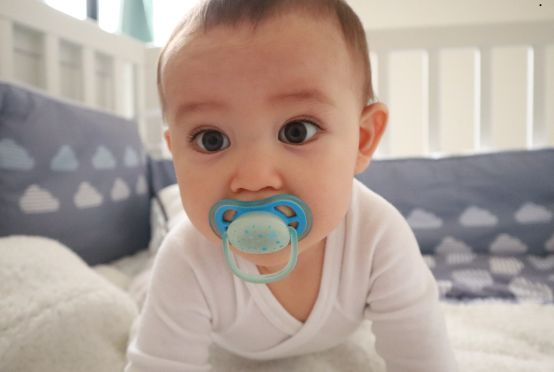Choosing the right pacifier for your baby can be overwhelming, but understanding pacifier sizes can help ensure your child’s comfort and safety. While a larger size might seem more comfortable, it could pose a choking risk. Balancing these factors is challenging, but selecting the correct size is crucial for your baby’s well-being.
Pacifier Size Chart
| Size | Age Range |
|---|---|
| Onesize | 0+ months |
| Size 1 | 0+ months |
| Size 2 | 6+ months |
| Size 3 | 18+ months |
Understanding Pacifier Sizes
Pacifiers come in different sizes to accommodate your baby’s age and developmental stage, making it essential to select the right one. Typically, sizes range from newborn to 18 months and beyond. However, choosing the correct size isn’t always straightforward. While a smaller pacifier may be safer for a newborn, it might not soothe an older baby effectively.
On the other hand, a larger size could be more comforting but may not fit a younger baby’s mouth properly, leading to potential issues in oral development. Therefore, it’s crucial to carefully match the pacifier size to your baby’s age and mouth development to ensure both safety and comfort.

How to Measure Your Baby for a Pacifier
Measuring your baby’s mouth size can help you choose the most appropriate pacifier, ensuring a snug and safe fit. To measure, gently press the pacifier against your baby’s mouth and observe how it fits.
A good fit should comfortably fill the mouth without causing discomfort. If the pacifier seems too small, it may not provide adequate soothing, while a pacifier that’s too large can lead to discomfort or choking hazards.
Balancing these factors is crucial; a proper fit enhances comfort and safety. Therefore, regularly check the pacifier’s size and fit as your baby grows to ensure ongoing suitability.
When to Transition to a New Pacifier Size
As your baby grows, knowing when to switch to a larger pacifier size is essential for their comfort and safety. Key signs include your baby frequently outgrowing the pacifier or showing discomfort.
Transitioning to a larger size smoothly involves gradually introducing the new pacifier while monitoring your baby’s reaction. This careful approach ensures both comfort and safety, helping to balance the need for effective soothing with the risk of potential discomfort or hazards.
Choosing the Right Pacifier Material and Shape
In addition to size, the material and shape of a pacifier can significantly affect your baby’s acceptance and comfort. Common materials include silicone, which is durable and easy to clean, and latex, which is softer but less long-lasting.
Regarding shapes, orthodontic nipples support natural mouth development, while traditional shapes can be more familiar and comforting. Balancing these factors is key; the right material and shape enhance your baby’s comfort but may require some trial and error to find the ideal fit.
FAQ
1. How do I know if a pacifier is too small for my baby?
Answer: A pacifier might be too small if your baby frequently tries to push it out of their mouth or seems unsatisfied with it. Additionally, if the pacifier doesn’t cover the baby’s mouth adequately or if it causes any visible discomfort, it’s likely time to move to a larger size. Always ensure the pacifier fits snugly without being overly tight.
2. Can I use the same pacifier size for multiple babies?
Answer: Generally, pacifiers should be sized according to each baby’s age and developmental stage. While some pacifiers are designed to be adjustable, using the appropriate size for each child is crucial for safety and comfort. For different babies, it’s best to choose pacifiers that match their individual needs and stages of growth.
3. How often should I check if my baby needs a new pacifier size?
Answer: Regularly check your baby’s pacifier size, especially every few months or when you notice changes in their sucking behavior or oral comfort. Growth spurts or developmental changes may necessitate a size adjustment. Ensuring the pacifier remains the right size helps maintain comfort and safety.